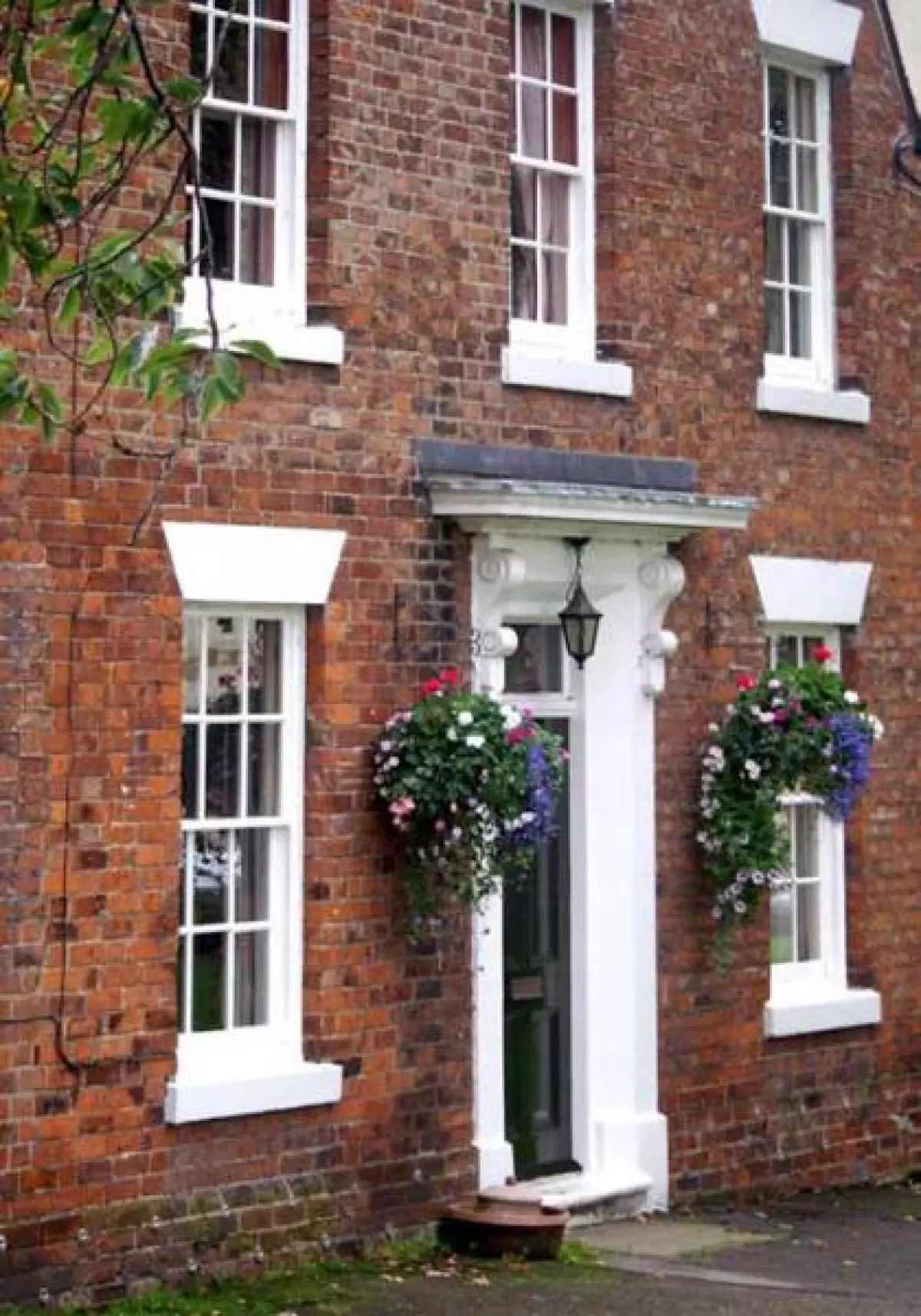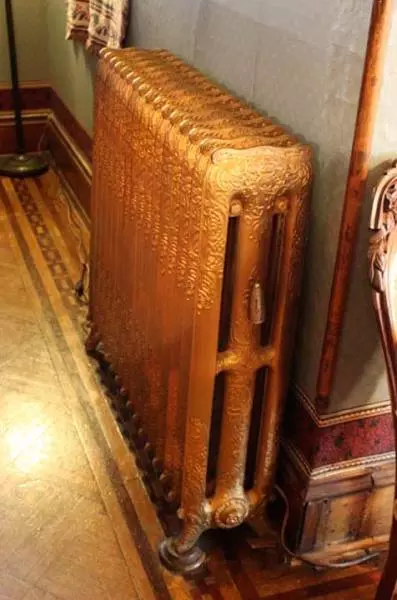Renovating old houses is not just about improving the aesthetics and functionality; it's about preserving the history and charm that these homes hold. Whether you're a homeowner or a professional renovator, these tips will help you navigate the unique challenges that come with renovating old houses and ensure that the integrity of the original design is maintained.
Masonry: Preserving the Foundation of Old Houses
 (Photo: Lansera/Fotolia.com)
(Photo: Lansera/Fotolia.com)
1. Know your maintenance cycles. Most buildings require tuckpointing maintenance every 50 to 60 years. Understanding these cycles will help you plan and budget for necessary repairs.
2. Match the mortar. When replacing mortar, ensure that the new mortar closely matches the color, consistency, and elevation of the original. Using the wrong type of mortar can cause damage to the old masonry.
3. Never grind out joints. Only remove deteriorated mortar and avoid unnecessary grinding. Incorrect advice from others may lead to unnecessary damage.
4. Avoid sealers. Sealing masonry traps moisture, exacerbating problems during freeze/thaw cycles. Opt for more appropriate solutions to protect your old bricks.
5. Replace in kind. If you need to replace damaged masonry units, it's important to use materials that match the original as closely as possible. Voids filled with putty are not a long-lasting solution.
Masonry advice provided by Jacob Arndt, Preservation Consultant, Architectural Stone Carver.
Radiators: Keeping the Heat Flowing
6. Don't throttle a one-pipe steam radiator. To prevent water hammering and air vents from squirting, keep the valve either fully open or fully closed. The steam and condensate need to share the confined space efficiently.
7. Create a perfect pitch. Make sure that one-pipe steam radiators are properly pitched towards the supply valve. Placing two checkers under the radiator feet can help achieve the ideal angle.
8. Gain control. Use thermostatic radiator valves to zone any radiator and save fuel. Install them on the supply side for hot-water and two-pipe steam radiators, and between the radiator and the air vent for one-pipe steam radiators.
 (Photo: Sylvia Gashi-Silver)
(Photo: Sylvia Gashi-Silver)
9. Get a great finish. Sandblasting followed by powder coating provides the best, long-lasting, non-sticky finish for radiators. However, it's recommended to leave this job to the professionals.
10. Don't worry about fires. Radiators, even with steam heat, do not reach the temperature needed to ignite paper. So, rest easy knowing that they are safe.
Radiator advice provided by Dan Holohan, Author, The Lost Art of Steam Heating.
Woodworking: Preserving the Craftsmanship
11. Use heartwood. When selecting wood for repairs or replacements, choose heartwood as it is more disease-resistant than sapwood.
12. Opt for rift or quarter-grain cuts. These cuts are more stable and reduce the risk of seasonal expansion and contraction.
13. Install plain sawn lumber with the heart side up. By placing the heart side up, flat lumber will wear better over time. Cupping will be minimized, and the edges will stay flat.
14. Learn to use hand tools. Most historic woodwork was crafted using hand tools, which produce unique finishes that can't be replicated by modern machinery.
15. Use traditional joinery. When making repairs, opt for traditional joinery techniques instead of using non-historic methods like epoxy casting. This ensures that the integrity of the original craftsmanship is maintained.
Woodworking advice provided by Robert Adam, Founder and Senior Advisor, Preservation Carpentry Department, North Bennet Street School.
Slate Roofing: A Timeless Touch
16. Identify your slate. To properly care for your slate roof, it's crucial to know the type of slate used. Using the wrong type can compromise the roof's integrity.
17. Understand your roof's longevity. Assess the remaining lifespan of your roof. A roof that has already outlived its expected longevity may not be worth investing in, while a younger roof deserves proper maintenance.
 (Photo: Nathan Winter)
(Photo: Nathan Winter)
18. Regularly inspect your roof. Take the time to walk around your house and inspect the roof at least once a year. Look for missing, broken, or sliding slates, as well as any suspicious flashing.
19. Shop around for quality. When it comes to slate roofing repairs, it's worth investing in a reputable and knowledgeable slater to ensure a job well done.
20. Educate yourself. Take advantage of the available slate roofing resources online to expand your knowledge. The more you know, the better equipped you'll be to make informed decisions and prevent potential problems.
Slate roofing advice provided by Joseph Jenkins, Author, The Slate Roof Bible.
Windows: Preserving the Soul of Old Houses
21. Save your wood windows. Despite their age, original wood windows can still provide many years of service. Avoid unnecessary replacements and preserve the authenticity of your old house.
22. Consider individual window needs. Assess each window's condition and decide on the appropriate level of restoration or replacement. Different windows may require different approaches.
23. Old windows can be energy efficient. With proper weatherstripping and the use of exterior storms, original windows can be made as energy-efficient as replacements. Interior air panels and curtains provide additional insulation.

24. Maintenance lasts. Regular maintenance and minor repairs can extend the lifespan of your old windows by another decade or two. Complete refurbishing will ensure they last for generations to come.
25. Enjoy your old windows. The original molding profiles and wavy glass add an authentic character that cannot be easily replicated.
Window advice provided by John Leeke, Preservation Consultant, OHJ Contributing Editor.
Plaster: A Timeless Artistry
26. Save it. If your old house has original plaster, preserve it. Removing it or replacing it with inferior materials can significantly diminish the historical value and appearance.
27. Avoid plaster buttons. When reattaching detached plaster, avoid using plaster buttons as they can further damage the surface. Opt for more secure methods like glue-injection reattachment.
28. Fill in the cracks. Cracks should be repaired properly to ensure a lasting and seamless finish. Dig out the cracks and infill them with plaster or setting compound for a more invisible repair.
29. Match up repairs. Preferably, use materials that match the existing plaster. However, if time is of the essence, mixing modern gypsum plasters with traditional materials can provide a seamless blend.
30. Practice first. Before tackling a visible repair, practice your plaster mix and trowel technique in an inconspicuous area or on a board to ensure a professional result.
Plaster advice provided by Noelle Lord, Preservation Consultant, OHJ Contributing Editor.
Hardware: Restoring the Finishing Touches
 (Photo: Sylvia Gashi-Silver)
(Photo: Sylvia Gashi-Silver)
31. Clean gently. Antique hardware should be cleaned using natural cleansers that won't damage the finishes. Avoid harsh chemicals that could strip away the patina.
32. Remove paint carefully. When removing layers of paint from hardware, take your time and be gentle. Solutions like trisodium phosphate (TSP) and water are effective and less damaging to the original finishes.
33. Be patient. Loosening layers of paint takes time. Check on submerged hardware daily, and gently rub off the loosened paint. Finish with a light scour using fine steel wool for a polished look.
34. Know what you've got. Gather as much information as possible about your hardware, including measurements, close-up pictures, and details about the interior mechanism. This will help you find an exact or close match.
35. Be flexible. While finding exact matches for hardware can be challenging, a close match can be just as good. Don't be afraid to mix and match or hide minor differences.
Hardware advice provided by Terri Hartman, Manager, Liz's Antique Hardware.
Preserving the beauty and charm of old houses requires a delicate balance between restoration and modernization. By following these tips, you can ensure that the unique character of these historical treasures is honored while making them functional for modern living. Remember, renovating old houses is not just about fixing things; it's about breathing new life into history.

















